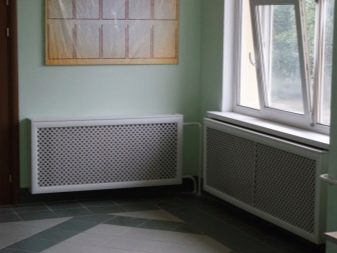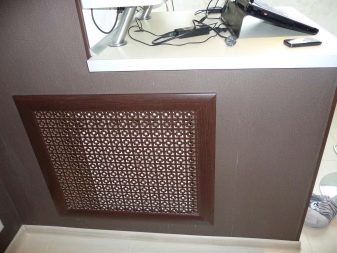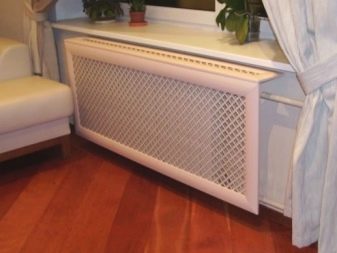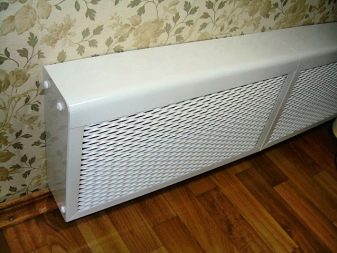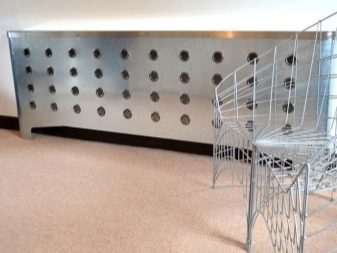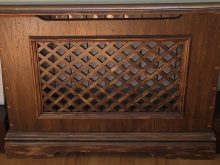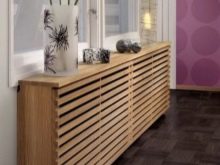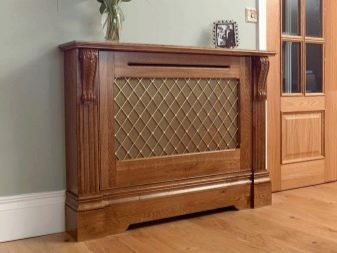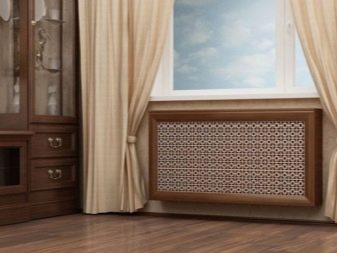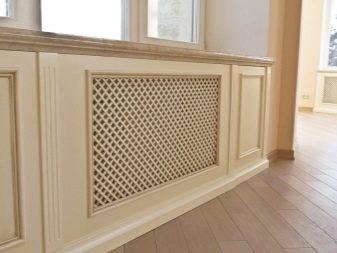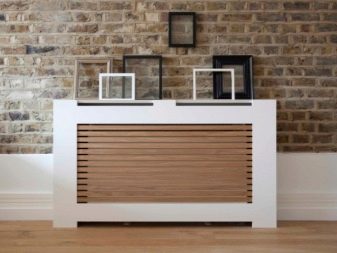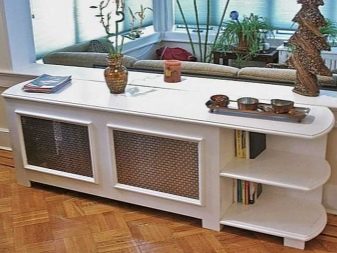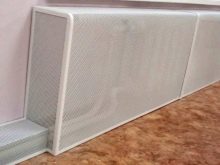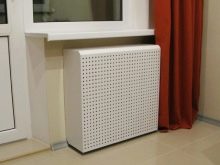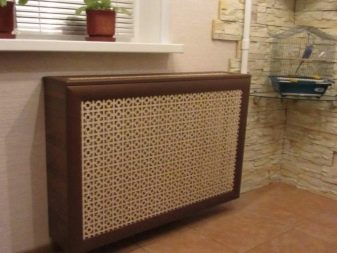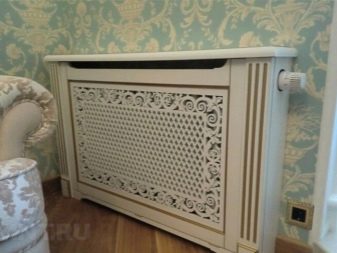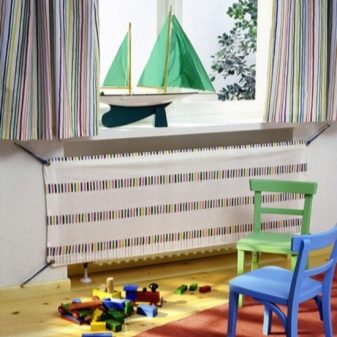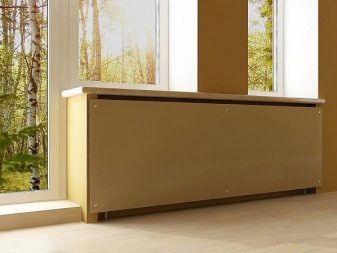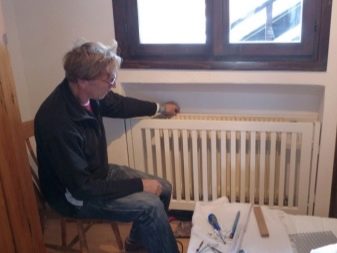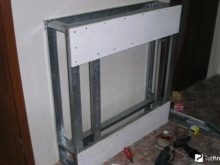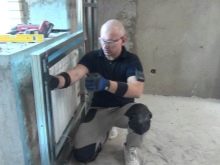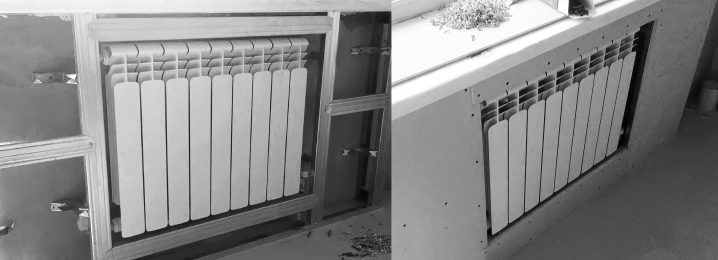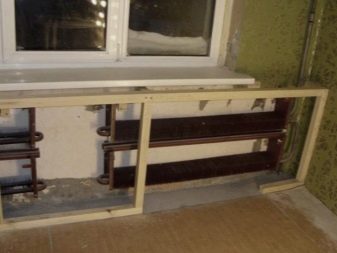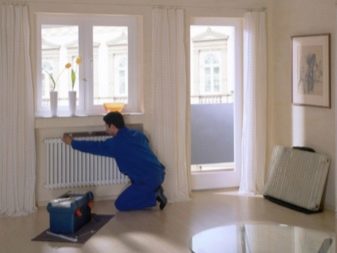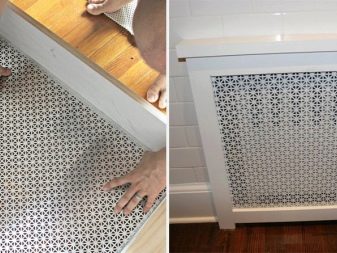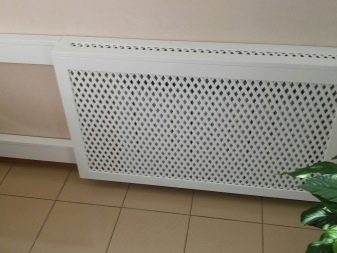Types and advantages of boxes for the battery
In modern interior design, homeowners are often faced with the question of how to hide radiators and their strapping. One of the ways is to use special boxes that give the room an elegant and original look, while hiding the batteries from view. These decorative elements can be installed not only in residential buildings, but also in offices, enterprises and social facilities.
Kinds
The first box for heating devices can be divided by type depending on the design. They can be flat, mounted without a cover and with a cover, as well as close the radiator on each side.
Flat boxes are used when the heating element is located in a niche. If the radiator is under the window sill, use a box without a lid; in other places it is possible to use hinged products with a lid. What kind of look is suitable in each particular case depends on the mounting options, thermal conductivity and design.
The materials from which the boxes are made can be many, for example, wood, drywall, glass, metal. The main condition that the element must meet is its good tolerance to high temperature indices. Consider these types in more detail.
The box made of metal has excellent thermal conductivity, and also leaves a wide run up for a variety of design solutions. Making and installing such screens yourself can be problematic, so special skills are required. The undoubted advantages are the reasonable price of such products, their long service life, as well as good tolerance to high temperatures.
Widespread boxed, made of wood. In their use has its own nuances. If this material is heated for a long time, it may be deformed.In order to avoid such consequences the box is processed by protective composition. But the tree also conducts heat poorly, so a solid surface is not the most reasonable option, the choice of a screen in the form of a grid with large spaces between the slats would be much more successful.
A wooden box can be installed in a room where the design presupposes the presence of other wooden elements. Due to the environmental friendliness and safety of the material, products can be used in almost any room, including children's areas.
For consumers who are especially important price category, manufacturers offer products from plasterboard. This material has a low cost, while it is easy to process and perfectly imitates wood, so these boxes are deservedly popular.
A less common form - a box of glass. Most often they are made in the form of screens and fixed to the surface with the help of supports. Such elements have an original appearance, you can put all sorts of drawings and paintings on them. The price of a box made of glass is above average, while due to the fragility of the material there are restrictions in their use,as products require the most careful handling.
Benefits
The box for batteries has undoubted advantages. First of all, it has an aesthetic function. Open pipes do not spoil the design of the room and do not catch the eye.
The second function is protective. Residents and visitors of the premises will not be able to burn themselves if they touch the hot radiator. Often boxes for this purpose are placed in apartments in which there are small children. In addition, the battery will be protected from dust and other contaminants, and warm air will circulate evenly.
In the case when the battery box is chosen correctly, this will help to ensure an excellent microclimate and heat in the room.
And also this is a great way to decorate. On the modern market there is a huge variety of products that can meet the requirements of the most demanding consumers.
Features and requirements
Decorative works in relation to radiators have their own characteristics. It is not so easy to hide these devices without disturbing their functionality, since it is assumed that the heat from such batteries will be less. In addition, access to the heating elements is difficult.Therefore, the decor is very important to understand exactly how to cope with this least loss.
In order to preserve the functionality of the batteries, the use of removable and side screens, which are not fixed to the wall, will be optimal.
Convenience is also expressed in the fact that, if necessary, the element can be removed as quickly as possible., which helps to save time in case of emergency situations, as well as preserves the integrity of the box itself. In the presence of solid fasteners quickly and without damage to dismantle the structure is not possible.
And also the important point is the thermolysis. Infrared radiation, heating objects, and convection, which heats the air itself, affect the heating. If there are no gaps in the box, this will become an obstacle to these actions. It is better if the screen does not close the radiator from the top and bottom, as for uniform heating, cold air must flow from the bottom of the heating element, pass through it and exit from the top already heated. If this is not possible, the heating of the room will be worse, and the temperature in the room, respectively, will be lower.
Based on the above, the most successful solution is a carved or perforated wooden box. A solid surface should be maximally absent, and the holes in this case will ensure air circulation. In addition, the tree is considered an environmentally friendly material and is suitable for various types of design. And also important is the fact that under the influence of high temperatures there is no release of harmful substances.
Other options
Boxes for radiators can be made not only from the above materials. For example, in some models, the basis is textiles. This is a good solution, as heat transfer remains high due to the free passage of air through the fabric.
Plastic boxes have a fairly low price, but the heat transfer when using them is significantly reduced. Their use will be appropriate in areas with high humidity, as well as exposure to steam and chemicals, such as bathrooms, where due to the adverse effects of moisture you should not use wooden and metal products, as they quickly fail.For the kitchen, on the contrary, more traditional materials will do.
A box of drywall do it yourself
If you have certain skills, as well as desires, a box of a material such as drywall, you can make yourself. This will allow not only to save, but also to realize the most daring design ideas and own fantasies. It is easy to make such a box, but it is necessary to know certain nuances that will help to do the job properly.
The heating device itself is measured first. It is necessary to calculate how much material is required at work. Depending on these indicators, drywall itself is purchased. It is required to process it beforehand.
To maximize heat transfer, the material should be rolled with a special needle roller, and to protect it from drying, the surface is treated with water-based PVA-emulsion.
Next is the turn of design development. It is necessary to consider the methods of heat generation In order to prevent it from going into the wall, which is often cold, it is advisable to glue the surface directly behind the battery with a foil that reflects heat.It is recommended to apply black paint on the made box from the inside, it will absorb heat and transfer it to the room.
At the bottom of the box, you must leave gaps that will help ensure thermal convection and will not interfere with the flow of cool air from below. It is recommended to make the main part located in the front in the form of a lattice, to make special holes for air circulation, which can be decorated.
In addition, it must be borne in mind that any heater requires periodic maintenance. For convenience, the front part can be made in the form of a door leaf. But you can also equip the box panels, which are easy to remove. If it is planned to be placed under the window sill, it will not be out of place to arrange the aerodynamic overhang, which will direct the air flow to the top.
Installation
The final step is to install the box for the radiator on the wall. At installation it is necessary to consider some conditions. Do not place the product close to the radiator, the most prominent point should be located 3 centimeters from the most prominent point of the heater.Next, determine the width of the front panel and prepare the necessary details.
The next important step is the installation of support elements. Depending on the type of construction, they can be fixed to the wall or floor, then a frame is installed on which the drywall will be screwed. If the material is planned to be painted, it is better to do this before installation. The places where the fixtures are located can be hidden by placing the decorative panels on top.
How to assemble a decorative box for a radiator can be seen in the video below.


